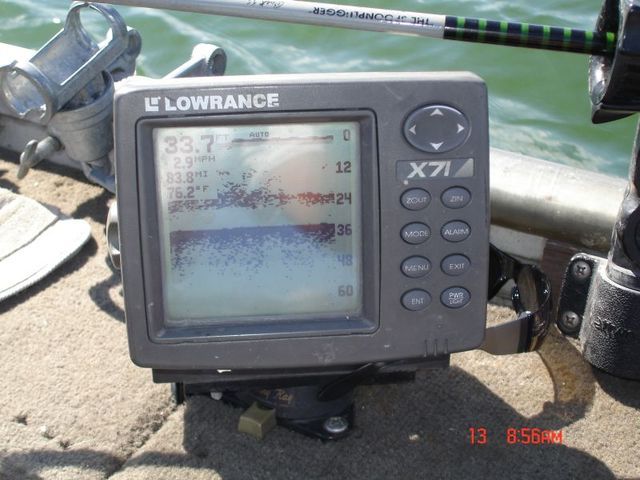D-wayneD-wayne wrote: ↑Wed Feb 21, 2018 9:12 am You really got my head spinning now....
A few questions that come to mind are about the "Thermocline Wall".
Could you elaberate on the type of lake you see this on?
(Rivers seldom have stable enough waters for thermocline to set up)
Have you seen multi layers of thermoclines ?
It is that in chasing big pike and particularly lake trout up here in Eastern Ontario I find that as the warmth sets up the thermoclime line visable on the electronics this becomes a line where they refuse to come up to from the depths.
Hense my question on the type of waters you are discussing.
Here when we have the hot dry summer period (doesn't happen every year) the upper thermoclime line is 10 to 15 feet or less and the temperature difference between the line is very very noticeable when you are jumping off shore.
If the weather has been calm and stable for an extended period of time (something that rarely happens here) I have seen the deep thermocline line develope. Is this that deep line of low O2 to the warm water species that you are referring to? I say warm water species because for ling whitefish and lakers it is common to locate them gathered below 75' all year.
I hope I am not stirring up silly questions but I am not sure if the deep thermocline line is something that I should be looking into around Eastern Ontario area.
Thanks for your great write up.
I am learning a tonne of information.
If I may add a bit to this discussion. What you are referring to in your neck of the woods is called a "two story" lake. What John and others have mentioned, that occurs mostly further south, is a lake where both the thermocline and the oxycline (level where oxygen depletes to the point fish can't survive) are frequently one and the same. In that case, there is no need to fish below the thermocline because there are no fish living there. The thermocline, in essence, serves as the bottom of the lake, hence the term "false bottom".
In a two story lake, you still have a thermocline, but you also have plenty of oxygen below the thermocline in the colder water. So warm water species like bass and panfish will spend most of their lives at or above this thermocline layer. Cool water fish like walleye, perch, pike or muskie frequently live below them, often in the thermocline (it's depth/width can vary) where the temperatures are cooler, but you still have plenty of oxygen. They often won't go above this layer into the warmer water as you mentioned. Then you have things like the trout and cisco that want the really cold water, and will go well below the thermocline layer to live there. All this typically only occurs in the summer.
So in this case (two story lakes), you don't technically have a false bottom, or if you ever do, it is in really deep water where oxygen starts depleting, but you do have levels of temperature gradients (breaklines) that the different fish species will use. These breaklines are just like any other breakline Buck wrote about, and fish will use them accordingly. Anglers can, also. Really good areas will be where these thermocline/breaklines meet bottom structure, especially for the warm water and cool water fishes. Fish that suspend and move a lot will often use these temperature breaklines over open water, but as John mentioned, it can be very hit or miss. The more reliable areas are where both structure and these breaklines (and breaks) all intersect.
I'll copy John's response again below because it is so "right on."
I could spend a lot of time talking about thermoclines but Buck summed it up really good so we don't have to think about it too much. A thermocline is nothing but another breakline that fish can relate to. If your depth meter will show it, then it will also show any fish that are relating to it, above it or below it. If you can see the thermocline and see at what depth the fish are relating to it, then it is a simple matter to put a lure down there and get your depth and then control your speed to see if you can get them to take. For most of the time, it is a hit and miss thing and not even worth putting much time into it. Around here, the thermocline may position the fish above it and it is worth the time to check it out. In that situation we are fishing bass that are on or near the bottom, just a bit shallower than what the thermocline is. I did an article a couple of months ago on that exact situation if you are a member of the national, you can look at the screen shots and see the fish we were catching. I explain everything you need to know in that article.
